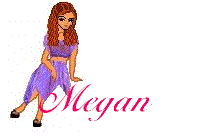Crewel Embroidery

Still popular today, Crewel is also one of the techniques that formed the basis of stumpwork and other modern three dimensional techniques (the other was Goldwork).
Technically, the only true crewel embroidery is done with wool, however, it is nwo stitched using a number of different threads and it is no longer the type of thread used that identifies crewel embroidery.
One of the things that, to me, typifies all crewel embroidery is the style of the design. Crewelwork tends to be very full in its look. To me, it suggests fertility or ripeness. Adding to this impression is the lack of size perspective in Crewel. A butterfly is the same size as a deer. A flower the same size as a tree. And all of them have that lovely fecund roundness to them.
Crewelwork loves colour. Crewel designs don’t care that leaves are traditionally green (or green-brown). If the embroiderer prefers blue, then the leaves are blue. And not just a blue-green, but a beautiful clear blue. To me, it’s the ultimate expression of use of colour “because I like this colour”.
Finally, Crewelwork loves stitches! Many motifs in Crewel embroidery are comprised of a number of different stitches that are laid on top of each other. This layering also adds to the full look of the embroidery, and also makes it look a lot more complex than it is.
In some later Crewel pieces, parts of the design were “stuffed” to give a three-dimensional effect (and which later transformed into Stumpwork) or worked over pieces of parchment or kid, again, to give an extra dimension. Another way this was achieved was by having a fully stitched motif next to one where the motif is completed in outline or similar filling. (e.g. trellis, or seed stitch). This can be seen in Image 5 below, where a motif has part of it fully stitched in satin stitch, with trellis over the top of that satin stitch, and an accompanying leaf is stitched with a stem stitch outline and filled with trellis stitch.
There is a child-like simplicity and joy, I feel, in Crewel embroidery. The rounded shapes, the lack of perspective and the riot of colour allows the embroiderer and the viewer to throw off the shackles of “adult” and enjoy the “pretty”.
And yet, for the keen viewer and embroiderer, Crewel can also be enjoyed on a much deeper and more intellectual level. You can enjoy the way that the designs, whilst being simple, are also exquisitely representative of what they are, can enjoy the work and the intricacy of the stitching of each motif, knowing that there are hidden layers, and wondering what these layers are.
Best of all, you can play lots of games with Crewel. A favourite pastime was hiding the unusual amongst the embroidery. Sometimes you find an unexpected beastie peeping out from amongst the foliage. Or you are looking at a motif and you move slightly and it becomes clear what the motif is.
I think that all of these are why Crewel is my favourite embroidery style. I find it deeply satisfying on so many levels – from just looking, to the designing and the stitching. It lets my imagination run riot and brings the child in me out to play.
Image 1: Elizabethan Embroidered Coif
Elizabethan embroidery is the forerunner to Crewel in design and execution. Many of the motifs and stitches used form the foundation of Crewel. The Elizabethan style of Crewel is typified by this coif. The motifs are encased in roundels that snake across the fabric. There is very little unstitched fabric in this, with spaces being filled with spangles and beads.

Image 2: Crewel pouch
This is a piece I have stitched. It is more of a Jacobean style, in that there is a lot of “white space” in the design. It still has a number of Elizabethan characteristics, with the vines encasing the motifs.

Image 3: Crewel Embroidery
Although a modern stitched piece, this is traditional Crewel design. You can see the roundness of the motifs, the different stitches and the riot of colour involved.

Image 4: Modern Crewel
As with all embroidery styles, Crewel has evolved. In this piece you can see a modern interpretation of Crewel, yet still with the characteristics that define it. In this more modern style, the designs aren’t as round and the colours are more “natural”, yet the designs themselves still have that simplicity that is real and unreal at the same time.

Image 5: Jacobean-style Crewel
This is a piece I am working on. You can see the stitched areas and the design drawn onto the fabric. As this is a historical-based piece, the motifs show clearly the roundness of design, the lack of size perspective and the love of colour that typifies Crewel embroidery. This is being stitched as DMC cotton thread on linen.

Recommended Reading
Beginner's Guide to Crewel Embroidery
Crewelwork (Essential Stitch Guide)
The New Crewel: Exquisite Designs in Contemporary Embroidery
Links
Talliaferro's "Royal Persian Blossom" Crewel Embroidery Project
The Crewel Work Company
Examples of Crewel Embroidery – a Pintrest board
Is there anything that you would particularly like to see an article on? If so, please contact me with your suggestions.
Happy Stitching

© 2012 Megan McConnell
This site needs an editor - click to learn more!
You Should Also Read:
Five Crewel Embroidery Stitches
Related Articles
Editor's Picks Articles
Top Ten Articles
Previous Features
Site Map
Content copyright © 2023 by Megan McConnell. All rights reserved.
This content was written by Megan McConnell. If you wish to use this content in any manner, you need written permission. Contact
BellaOnline Administration
for details.


